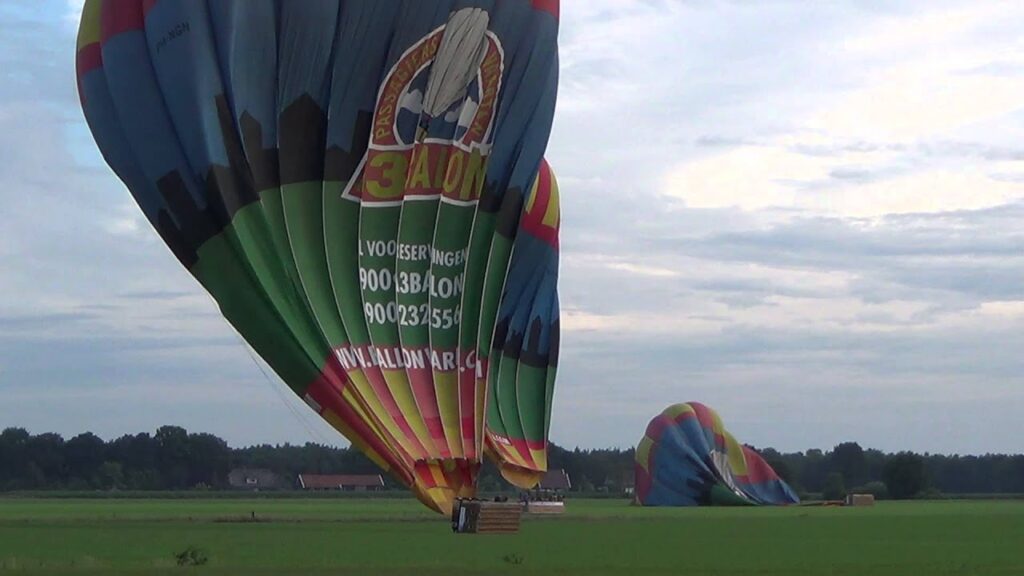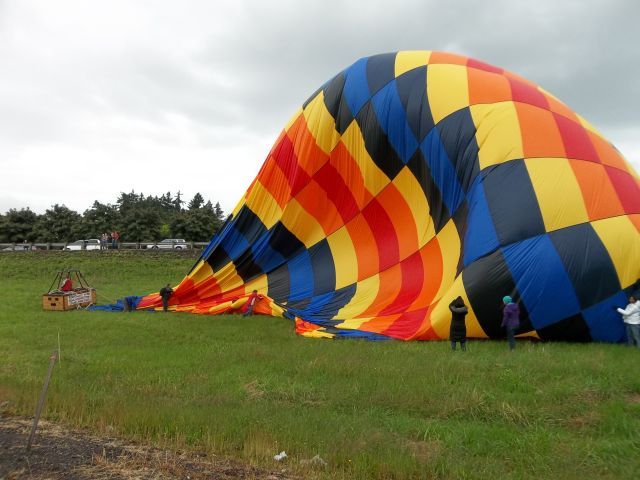Our Ultimate Guide To Landing Hot Air Balloons
If you planning to fly a hot air balloon or you are simply interested in how they function and land, then you are probably curious to learn about the ins and out of landing regulations as a pilot.
Hot air balloons do not have specific landing regulations and they can differ according to country, one key regulation, however, is that balloons should only land on authorised areas away from inhabitants unless the pilot needs to perform an emergency landing for example.
We’ve composed an informational guide below discussing where hot air balloons should land, some general guidelines for landing a balloon in different countries, factors affecting where hot air balloons land and some other guidelines surrounding flying these balloons.
Where Should a Hot Air Balloon Land?
Most of the time, a hot air balloon will have a designated landing site, this can differ by a few miles since landing a hot air balloon can depend on wind travel. The landing site will have to be authorised for this use and your ground crew will follow the balloon in the car then meet the balloon at the landing site.
The land a hot air balloon lands on should be a large space free of animals and people or power lines.
How Does a Hot Air Balloon Land?
To land a hot air balloon properly the pilot will allow hot air to escape from the balloon through a vent, the pilot has full control over the speed of this descent which should go smoothly and slowly. Landing a hot air balloon is very safe but you might get a few bumps or knocks depending on the strength of the winds.
General Guidelines For Landing a Balloon

Guidelines and regulations for landing hot air balloons can differ, but most use the FAA guidelines, we will list the general ones which are followed when landing a balloon down below.
- You can fly anywhere with a hot air balloon as long as you stay away from prohibited areas like other pilots.
- You are required to stay 1000 feet away from regulated areas with inhabitants as well as fly to a maximum of 3000 feet.
- You should land in authorised areas, however, emergency landings are authorised.
- Pilots should be licensed and familiar with rules and regulations as well as licensed before operating.
Factors Affecting Where Hot Air Balloons Land
Unlike planes, it is very hard for a plane to land in a precise location, many factors can affect where they end up, we’ve listed a few of them down below.
- The wind – The direction of the wind truly determines where a hot air balloon will end up. If the wind direction is south, then the landing site will be further south as the balloon will travel north, pilots can manipulate wind direction to move the plane.
- Wind speed – Wind speed determines how far a balloon will travel and how it will land, medium winds might lead to a bumpy landing while strong winds mean your ride could be cancelled.
- Landing area – Bigger hot air balloons will need a bigger landing area with more room to land while a smaller hot air balloon needs a smaller land.
- Weather – Unexpected weather and storms can change landing times or cause landing positions to move suddenly, flying in rainy or stormy weather is very unsafe.
- Permission – You are only allowed to land a hot air balloon in certain places with permission from the landowner.
Other Regulations & Guidelines For Hot Air Balloons
Apart from landing rules, there are many other rules and regulations which are essential to know when boarding or piloting a hot air balloon.
- Safety features – Your hot air balloon will come with some safety feature essentials no matter what, these include fire extinguishers, a rope and second ignition as well as a gas hose.
- Licensing – All pilots need to undergo training and licensing before flying a hot air balloon to keep passengers safe.
- Checklist – Hot air balloons will need to have a checklist ticked off before flying to ensure safety, if the balloon does not meet the requirements then it cannot fly.
- Certification and insurance – Before anyone can fly a hot air balloon in a country, they need a certification for their balloon as well as insurance.
- Seatbelts – For take-off and landing, passengers will be required to wear a seatbelt for their safety.
Frequently Asked Questions About Hot Air Balloons & Landing
Is landing a hot air balloon dangerous?
No, pilots have full control over hot air balloons when landing, they are not dangerous although in higher winds, you might feel a few bumps when the basket touches the ground, you could also potentially land on your side.
How long do hot air balloons fly before landing?
A hot air balloon will fly for around an hour before landing, this could be shorter or longer however depending on the tour and fuel.
Where should a hot air balloon land?
A hot air balloon should land in a large land that is authorised for landing, this land should be free of animals and the ground crew should meet the balloon.
Why would a hot air balloon need to emergency land?
An emergency landing will likely happen if the pilot sees obstacles within the horizon when flying the balloon or there is an indication of bad weather. An emergency landing is allowed to happen anywhere.
Final Words
To conclude, landing hot air balloons is safe and easy, there are no regulations about where to land, but the general guidelines are that the landowner has to authorise you land before and there should be no people or animals on the ground.
Other rules for flying hot air balloons are that they should be 1000 feet above the ground and no more than 3000 feet high.
I’m Annie, a twenty-something year old girl who loves hot air balloons. So much so, that I have a full time job as a Flight Instructor and it is all I love talking about. Something about being up there in the elevated altitudes helps all my stresses float away!
